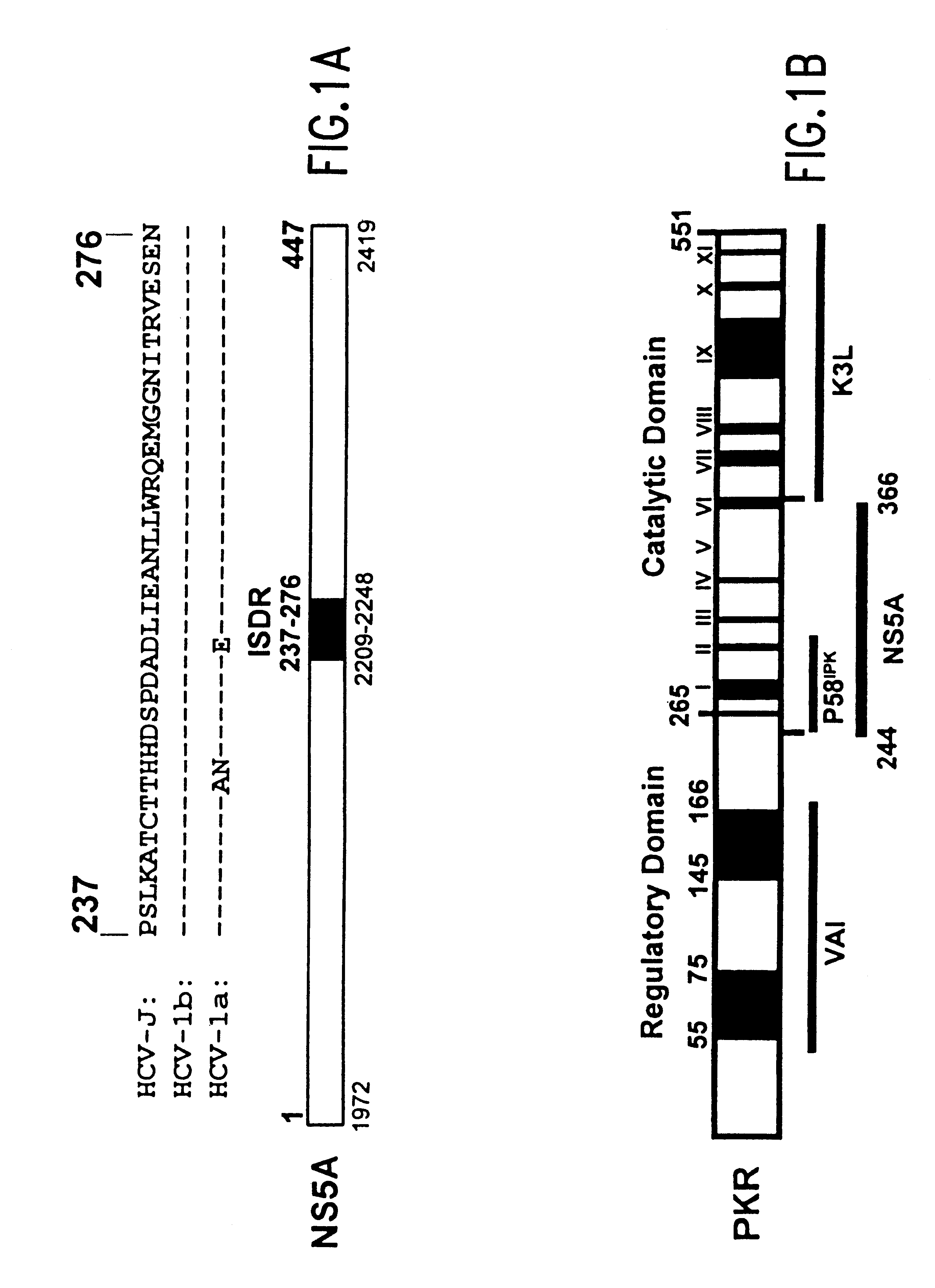Screening methods to identify agents that selectively inhibit hepatitis C virus replication
a technology of hepatitis c virus and selective inhibition, applied in the direction of viruses/bacteriophages, transferases, peptide sources, etc., can solve the problems of cirrhosis, progress in understanding hcv replication and pathogenesis, and lack of cell culture systems, so as to prevent the dimerization of pkr
- Summary
- Abstract
- Description
- Claims
- Application Information
AI Technical Summary
Benefits of technology
Problems solved by technology
Method used
Image
Examples
Embodiment Construction
The present invention relates to novel methods for identifying antiviral agents which interfere with viral inhibition of IFN-induced cellular defense mechanisms. The present invention relates to methods for screening for antiviral agents which target the interaction of viral proteins containing ISDR domains with cellular PKR protein kinase. The present invention more particularly relates to methods for screening for novel antiviral agents which target the interaction of HCV NS5A and IFN-induced PKR protein kinase. In another embodiment, the present invention more particularly relates to methods for screening for antiviral agents which target HCVNS5A inhibition of PKR dimerization.
The invention is based, in part, on the Applicants'surprising discovery that (1) the ISDR region of NS5A functionally contributes to the IFN-resistant phenotype of HCV; (2) additional sequences surrounding the ISDR are required for the interaction between NS5A and PKR; (3) NS5A represses IFN-induced PKR thr...
PUM
| Property | Measurement | Unit |
|---|---|---|
| time | aaaaa | aaaaa |
| time | aaaaa | aaaaa |
| pH | aaaaa | aaaaa |
Abstract
Description
Claims
Application Information
 Login to View More
Login to View More - R&D
- Intellectual Property
- Life Sciences
- Materials
- Tech Scout
- Unparalleled Data Quality
- Higher Quality Content
- 60% Fewer Hallucinations
Browse by: Latest US Patents, China's latest patents, Technical Efficacy Thesaurus, Application Domain, Technology Topic, Popular Technical Reports.
© 2025 PatSnap. All rights reserved.Legal|Privacy policy|Modern Slavery Act Transparency Statement|Sitemap|About US| Contact US: help@patsnap.com

